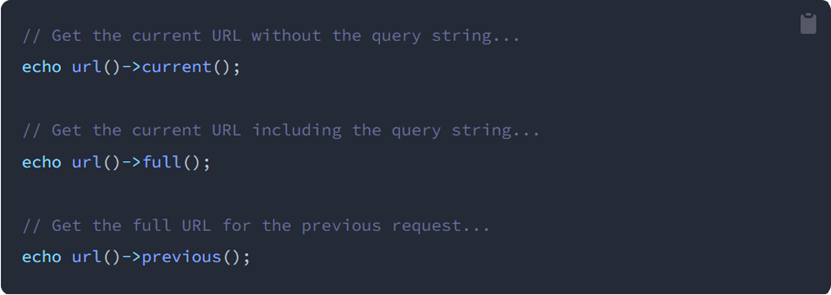- Consulting
- Training
- Partners
- About Us
x
TABLE OF CONTENT |
| 1. Overview |
| 2. URL Generation |
| 3. Session |
| 4. Validation |
| 5. Error Handling |
| 6. Conclusion |
| 7. About CloudThat |
| 8. FAQs |
Laravel is an open-source PHP web framework with expressive, elegant syntax. Laravel has its built-in features with a variety of compatible packages and extensions, making it one of the best choices for building modern full-stack web applications. In my previous blog, we got an insight into Understanding The Basic Components Of Laravel Framework – Part 2
This segment will be the last part in which we cover the remaining topics such as URL generation, accessing the current URL, error handling techniques, and many more.
Laravel provides helpers to assist in generating URLs for applications. The helpers are primarily helpful in building links in templates and API responses or developing redirect responses to other application modules.
The URL helper is used to generate arbitrary URLs for the applications. The generated URL will automatically use the ‘HTTP or HTTPS’ and host from the current request is handled by the application:





Since HTTP-driven applications are stateless, sessions provide a way to store information about the user across multiple requests. User information is typically placed in a persistent store/backend that can be accessed from subsequent requests. Laravel has a variety of session backends that are accessed through an expressive, unified API.
The application’s session configuration file is stored at
|
1 |
config/session.php |
By default, Laravel is configured to use the ‘file’ session driver, which works well for many applications. If the application is load-balanced across multiple web servers, then, in this case, we should choose a centralized store that all servers can access.
The session ‘driver’ configuration option defines where session data will be stored for each request. Laravel has several great drivers out of the box:
|
1 |
storage/framework/sessions |
Laravel has several different approaches to validate applications’ incoming data. It includes a wide variety of convenient validation rules that may apply to data, even providing the ability to validate if values are unique in a given database table.
|
1 |
routes/web.php |

|
1 |
Illuminate\Validate\ValidationException |

Alternatively, validation rules may be specified as arrays of rules instead of a single | delimited string:
In addition, you may use the ‘validateWithBag’ method to validate a request and store any error messages within a named error bag:
Laravel error and exceptional handling are configured when a new Laravel Project starts.
|
1 |
App\Exceptions\Handler |
This is the class is where all exceptions which are thrown by the application are logged and then rendered to the user.
|
1 |
App\Exceptions\Handler |


After going through all the blog parts, one should have a basic understanding of Laravel with its key features. We explored the use of Laravel on the AWS server from setup to all its essential components. There are still many small topics left, but we have covered all important topics at the beginner level. If you want to know more advanced topics on Laravel, drop your queries in the comments section, and I will address them at the earliest. Keep doing new projects on Laravel to learn more about this fantastic framework.
CloudThat is the official AWS Advanced Consulting Partner, Microsoft Gold Partner, and Training partner helping people develop knowledge on the cloud and help their businesses aim for higher goals using best in industry cloud computing practices and expertise. We are on a mission to build a robust cloud computing ecosystem by disseminating knowledge on technological intricacies within the cloud space. Our blogs, webinars, case studies, and white papers enable all the stakeholders in the cloud computing sphere.
If you have any queries about AWS Laravel components, Laravel framework development, or any other AWS services, feel free to drop in a comment and we will get back to you quickly.
Q1:- What is Laravel Nova?
A:- Nova is a Laravel single-page application, where front-end technologies are used as Vue.js. It has its dashboard. It has a very handful of functionalities that are very useful in a web application’s dashboards.
Q2:- Why is Vue the best combination with Laravel?
A:- Vue is the front-end technology that can be easily blended with any framework, but why it is considered the best match for Laravel is also a unique topic to debate. Laravel has inbuilt packages by which working in Laravel with Vue is convenient. Using these lethal combinations, tasks like composing the elements, event-driven programming, UI changes, single page application development, and complex application development are handled with ease.
|
Voiced by Amazon Polly |

Guru Bhajan Singh is currently working as a Software Engineer - PHP at CloudThat and has 7+ years of experience in PHP. He holds a Master's degree in Computer Applications and enjoys coding, problem-solving, learning new things, and writing technical blogs.
Our support doesn't end here. We have monthly newsletters, study guides, practice questions, and more to assist you in upgrading your cloud career. Subscribe to get them all!
Comments